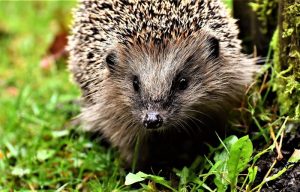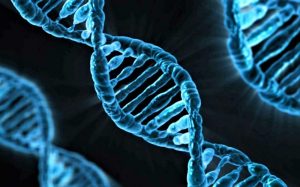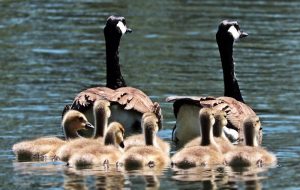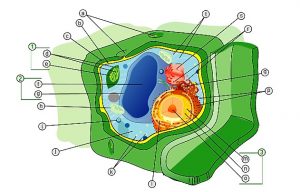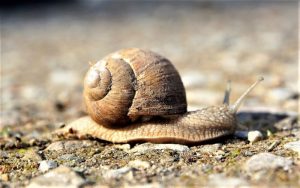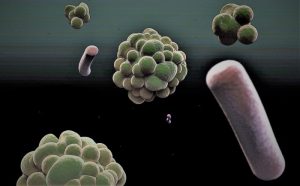Echinoderms
Echinoderms are animals that live in the sea regardless of the region of the world or the level of depth. There are more than 7000 species that live free or fixed at the bottom of the sea.
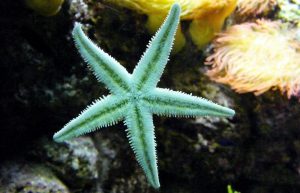
Common features
- Pentarradial symmetry
- Aquifer system
- Sexual or asexual reproduction
What are echinoderms?
Echinoderms (from the Greek "echinos" meaning hedgehog or spine and "derma" meaning skin) are a broad edged marine invertebrate. They live in the ocean and can be found in deeper areas as well as near the coasts. They all have a calcareous endo-skeleton, which may look like plates with spines or be made up of scattered ossicles.
Echinoderms characteristics
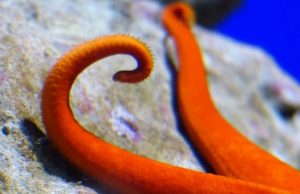 The pentarradial symmetry in equinoderms adult organisms is a very particular characteristic that determines the shape of their body. This aspect is observed quite clearly in starfish, whose body has five exactly equal points that are located around a central axis, perpendicular to the points. This physical characteristic makes it difficult to identify the organs of the echinoderms. On the other hand, it is pertinent to point out that this pentarradial symmetry is bilateral in the larvae.
The pentarradial symmetry in equinoderms adult organisms is a very particular characteristic that determines the shape of their body. This aspect is observed quite clearly in starfish, whose body has five exactly equal points that are located around a central axis, perpendicular to the points. This physical characteristic makes it difficult to identify the organs of the echinoderms. On the other hand, it is pertinent to point out that this pentarradial symmetry is bilateral in the larvae.
Another particular characteristic is its aquifer apparatus, which is made up of a vessel located in a ring around the esophagus, and which communicates with the outside of the hydraulic channel. This system allows locomotion, food transport and gas exchanges. On the other hand, they can move around thanks to their ambulatory feet, that is, small feet located in the lower part of their body.
Echinoderms classification
According to their morphology, we can classify the echinoderms in the following types:
- Crinoids: popularly known as sea lilies because of their branched shape, similar to the shape of some plants.
- Asteroids: Their body is usually flattened, thin and fragile. They have a central axis and five arms. They are known as starfish.
- Ophiuroids: Like asteroids, they have five arms, but more robust than those of starfish and these do not connect to each other.
- Equinoids: They are more voluminous than other classes of echinoderms. They are balloon-shaped and do not have arms. They are known as sea urchins and one of their peculiarities are the spines that cover their body.
- Holothuroids: Their body is elongated and although they lack arms, their organs are constituted in their internal part, in multiples of five.
Echinoderms reproduction
On the one hand, echinoderms reproduction is generally sexual, from individuals of separate sex and with external fertilization. Embryos develop indirectly and go through different stages as larvae before becoming an adult organism.
On the other hand, reproduction can also be asexual, reproducing themselves commonly by fragmentation.
Echinoderms nutrition
 Echinoderms nutrition varies according to the type of echinoderms. Starfish are predators and move slowly to catch their prey such as mussels or oysters. The digestive enzymes process the prey tissues and the liquid produced is aspirated into the digestive tract of the starfish.
Echinoderms nutrition varies according to the type of echinoderms. Starfish are predators and move slowly to catch their prey such as mussels or oysters. The digestive enzymes process the prey tissues and the liquid produced is aspirated into the digestive tract of the starfish.
The hedgehogs, of the equinoid class, feed on algae from the coastal ocean zone. Members of this class have a particular structure, the lantern of Aristotle, located in the mouth consisting of 40 ossicles that form five calcareous teeth joined by muscles. This structure serves to crush plant matter.
Sea cucumbers are benthic and feed on sedimentary particles. They are suspenseful. They have tentacles around the mouth that extend onto the surface of the sediments. The sedimenting particles stick to the mucus that covers the tentacles, and the latter are regularly introduced into the digestive tract, which allows the animal to ingest the collected particles and to coat the tentacles with mucus again.
Breathing
Echinoderms epidermis have hairy dermal gills in which an exchange takes place that allows a greater diffusion. The ambulatory feet also form an exchange surface. Internal tissues, however, are not in direct contact with seawater. The aquifer system, whose internal surface is ciliated, serves as a circulatory system that allows oxygen, nutrients and wastes to travel from the epidermis to the internal tissues or vice versa.
Habitat
Echinoderms are species that belong only to marine world as they are unable to regulate their osmotic composition. The echinoderms’ larva lives freely in oceans as part of the zooplacton, while adult organisms usually live in ocean benthic areas, i.e. in the deepest parts, where they are buried or not, on sand beds or rocky sea beds.
Examples
Examples of echinoderms include, sea stars of the asteroid class, sea lilies of the crinoid class or cucumbers of the holothurian class.
How to cite this article?
Briceño V., Gabriela. (2019). Echinoderms. Recovered on 24 February, 2024, de Euston96: https://www.euston96.com/en/echinoderms/



